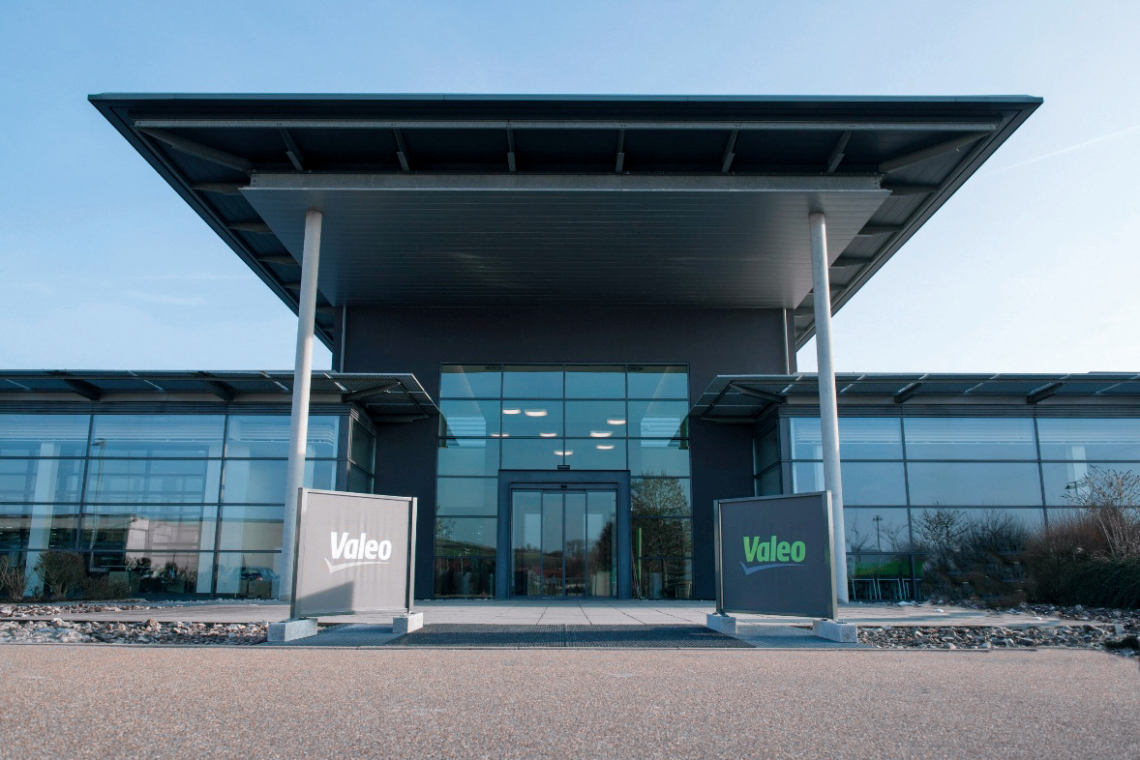In the September 2025 issue, we highlighted the use of LiDAR sensors in port logistics for automated container loading and docking of ships. We also looked at the use of LiDAR in rail transportation to detect obstacles on the tracks at night and in uncertain weather conditions.
This issue focuses on market volume and growth, including automated driving, as well as traffic control. In traffic light control, various types of sensors are currently used to control and monitor the flow of traffic. The best known are induction loops, microwave sensors, infrared sensors and video cameras.
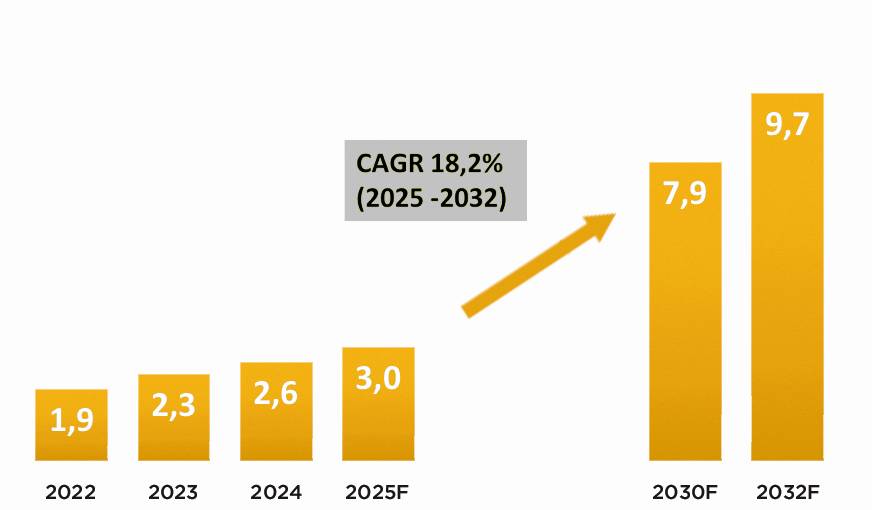 Fig. 2: Global market volume of LiDAR sensors in billion $ - 2022 to 2032F (Data: Fortune Business Insights)
Fig. 2: Global market volume of LiDAR sensors in billion $ - 2022 to 2032F (Data: Fortune Business Insights)
The largest LiDAR sensor manufacturers worldwide
China
- Hesai Photonics - Shanghai
- DJI (Dà-Jiang Innovations) - Shenzhen (LiDAR modules in drones, automotive parts)
- RoboSense - Shenzhen
- YDLIDAR (LiDAR) - Hefei / Shenzhen
USA - CALIFORNIA
- Seyond - California
- Velodyne LiDAR - California
- Luminar Technologies - Arizona
- AEye - California
- Quanergy - California
- Vayyar Imaging - Texas (US location for North America)
Israel
- Innoviz Technologies - Haifa
- Luminar
Japan - Tokyo
- Sony Semiconductor - Tokyo (LiDAR sensor technology in mobile/automotive)
- Panasonic - Osaka
South Korea
Hanwha / S-Connect - Seoul (LiDAR module subcomponents)
France - France
Valeo AI - Paris (LiDAR modules in automotive systems)
Automated driving level 3 at Valeo
Production of Valeo's second-generation LiDAR technology began in 2021. The Honda Legend, the world's first vehicle to be approved for SAE Level 3 automated driving, uses a LiDAR scanner, two front cameras and a Valeo data fusion controller. The Mercedes-Benz S-Class, the second vehicle with Level 3 certification, is also equipped with laser LiDAR technology, Valeo SCALA Gen2.
Valeo's third-generation laser LiDAR technology was introduced in 2024 and enables speeds of up to 130 km/h on the highway. Even at high speeds on the highway, autonomous vehicles equipped with this system are able to handle emergency situations independently. For safety reasons, a triple redundancy system similar to that used in aircraft systems is used. The laser LiDARs are manufactured at 'Valeo Schalter und Sensoren' in Wemding/Bavaria (Fig. 1).
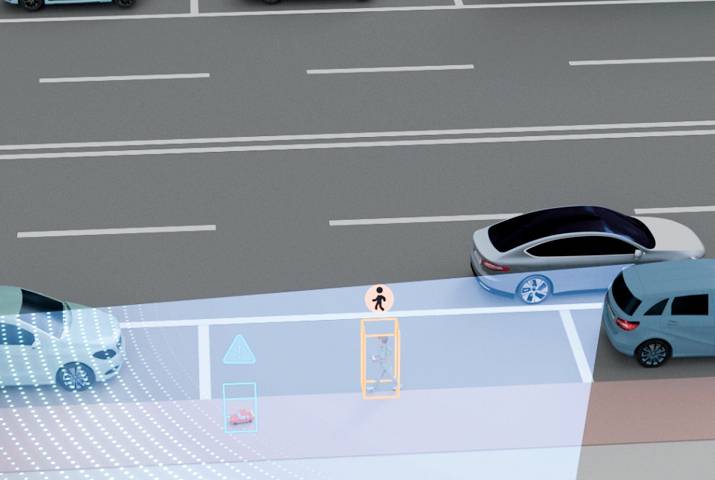 Fig. 3: Autonomous parking - the view to the side here with the Seyond 'Robin W'
Fig. 3: Autonomous parking - the view to the side here with the Seyond 'Robin W'
LiDAR sensors and AI for traffic light control
LiDAR sensors are now being used to scan the surroundings with laser light, combined with artificial intelligence. The LiDAR sensor generates a cluster of points, which the evaluation electronics identify as pedestrians, cyclists, etc., for example. The movements (speed, direction, etc.) are analyzed in real time and AI creates a movement prediction. This intention recognition is used to predict whether the pedestrian wants to cross the road. The traffic lights are then prioritized based on the current traffic volume and weather conditions.
During a test in Reykjavik, Iceland, comparative tests were carried out between LiDAR sensors and the induction loops already installed. The results showed numerous deviations from reality between 30% and +6%, depending on where the induction loops were placed. Some of the biggest problems occurred with the detection of vehicles arriving at the same time. Induction loops were subject to error deviations when two vehicles arrived at stops at the same time.
Adverse weather conditions with snow and ice on the road surface also led to deviations. The detection of different types of vehicles, cyclists and pedestrians was much more precise with a LiDAR system. In addition, repair work on induction loops requires road construction work, whereas a LiDAR sensor can be easily replaced.
In the example shown in Figures 4 and 5, two LiDAR sensors were used: the 'Falcon LiDAR' with a range of up to 150 m behind each stop line and the 'Robin W', which offers greater precision at shorter distances. They work effectively in all weather and light conditions while ensuring privacy (no person detection). The 'Falcon' uses a 1550 nm wavelength laser with a field of view of 120° × 25° and a resolution of 0.06° × 0.06°. The 'Robin W Wide FOV LiDAR' (FOV = Field of View) has a detection range of 0.1 m to 150 m with a field of view of 120° × 70° and a resolution of 0.15° × 0.36°. Unlike conventional traffic guidance systems that integrate hardware and software from multiple vendors, the example shown here provides a unified IT platform 'SIMPL' combined with the LiDAR detection hardware, perception software and traffic system integration.
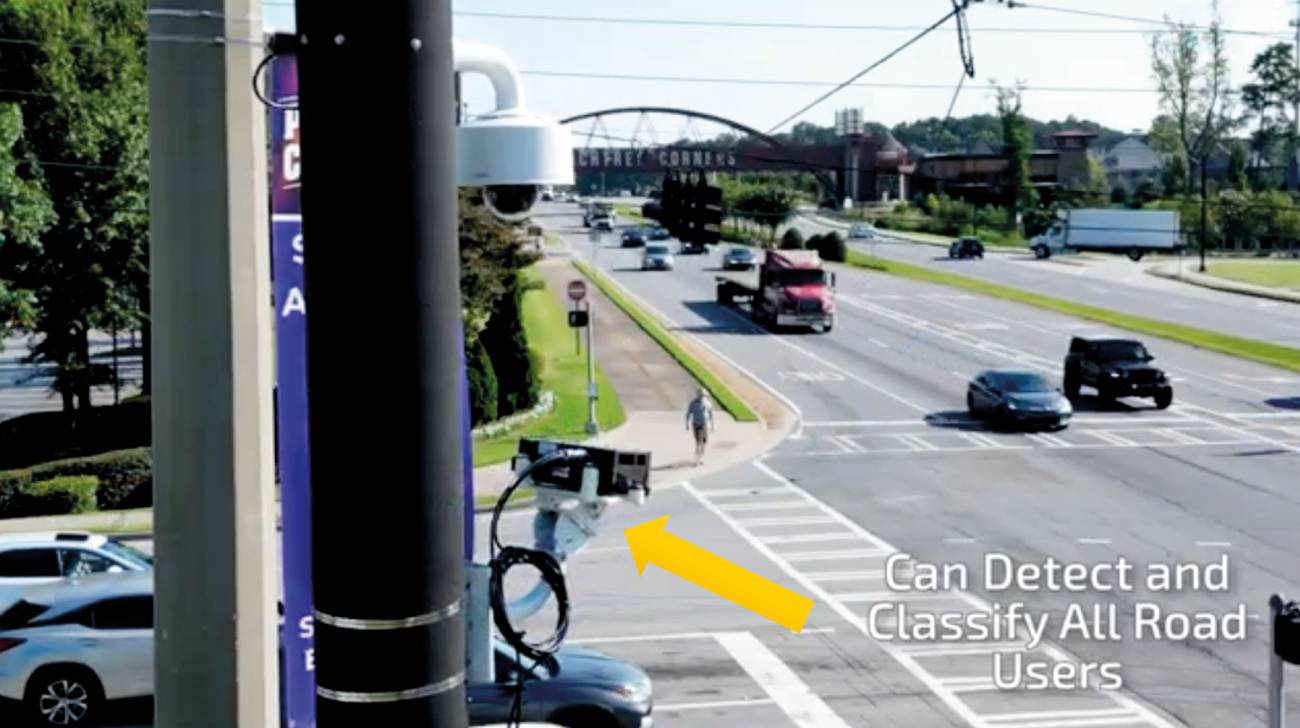 Fig. 4: Seyond long-range and short-range LiDAR sensors (arrow) for traffic control, which can accurately identify different types of road users
Fig. 4: Seyond long-range and short-range LiDAR sensors (arrow) for traffic control, which can accurately identify different types of road users
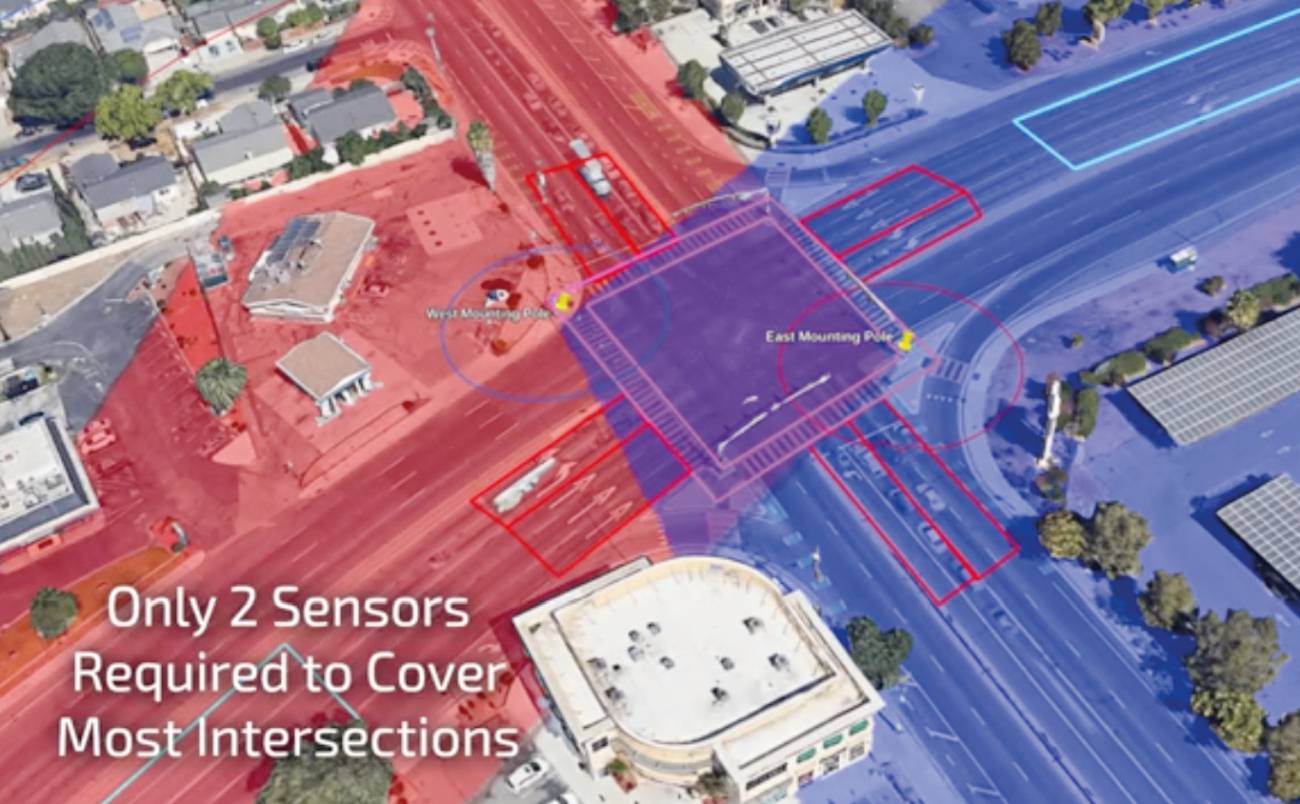 Fig. 5: Two LiDAR sensors were installed at opposite corners of the intersection so that the entire intersection is covered
Fig. 5: Two LiDAR sensors were installed at opposite corners of the intersection so that the entire intersection is covered
To the point
- The global market for LiDAR sensors is worth around 3 billion dollars this year. According to Fortune Business Insights, it is expected to grow at a CAGR of 18.2% to around $10 billion over the next seven years.
- Applications range from automated driving from class SAE 2+ to traffic guidance, automated container loading and rail technology.
- The largest LiDAR manufacturers are based in China, such as Hesai Photonics in Shanghai, the USA, Israel and France.
- LiDAR in traffic light control, linked with AI, precisely recognizes the different road users, their direction, speed, etc., and uses this information to create a movement prediction in real time. From this, it creates a movement prediction in real time, which in turn is converted into corresponding traffic light signals.
This is a new growth market with a wide range of electronic applications. Unfortunately, the major ADAS manufacturers (Advanced Driver Assistant Systems) such as Bosch, Continental and ZF have withdrawn from their own LiDAR development in recent years. It remains to be seen whether the more cost-effective 4D imaging radar technology with detection of speed, distance and horizontal and vertical directional angle, which Elon Musk also prefers for Tesla, will prevail.
I wish you a successful end to the year in Q4.
Stay with us
Yours
Hans-Joachim Friedrichkeit
Contact us at

